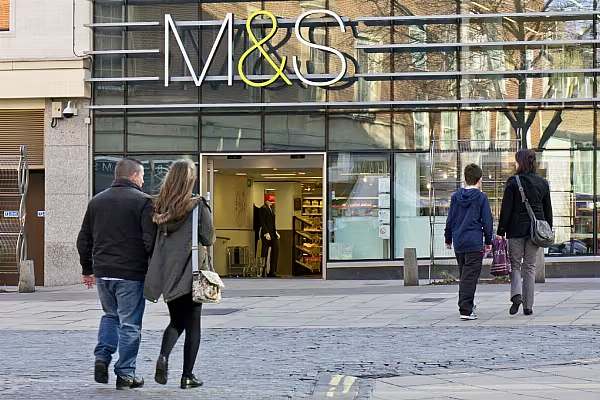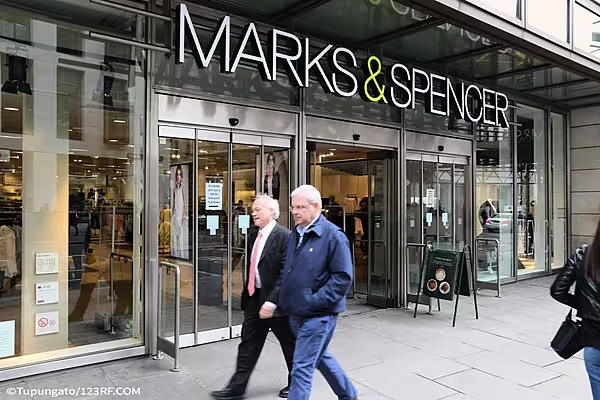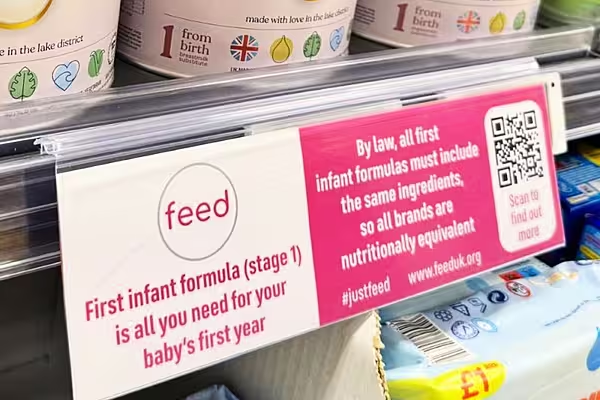The "clickable catwalk" has come to the high street.
Marks and Spencer, where Britons buy their knickers and prawn sandwiches, has copied Burberry in making a small collection of clothing available to shoppers (both online and in the real world) at the same time that it's unveiled to the fashion press.
The M&S decision to ape the luxury industry by adopting a "see-now, buy-now" strategy could easily be dismissed as a publicity stunt. It's certainly generated acres of coverage among fashion commentators (more used to hearing about this kind of thing from Tom Ford). But it has far broader significance for a British shopping bellwether that has generated just a single quarter of positive sales growth in clothing and home furnishings in four years.
First off, it's the latest evidence of M&S smartening up on the style front. Many of its womenswear ranges look more fashionable, and have better fit and fabrics than a couple of years ago.
More important, it shows a new management team trying to respond to one of the biggest complaints about the store chain: its abject failure at times to have popular items in shops and in the right sizes. M&S followers will recall former CEO Marc Bolland bemoaning that he could have sold thousands more ballet pumps, printed tops or lightweight coats, if only they were in stock.
Bolland handed over to M&S lifer Steve Rowe last month. He will unveil his strategic plan in two weeks time, with product availability at the center of his blueprint. Rowe made sure there were no empty shelves when he ran M&S's successful food division, helping lift same-store sales. He'll want to deploy the same tactic in clothing.
Investors would be forgiven for thinking they've heard all this before. Successive CEOs have tried, and failed, to fix the M&S supply chain. But Rowe seems to be making progress. A recent fashion line designed with "It Girl" Alexa Chung looked well-stocked. The see-now, buy-now collection -- launched this week -- is another test of whether things have really changed.
The new boss may also benefit from his predecessor's heavy investment in modernization. Bolland spent about 3 billion pounds ($4.3 billion) during his six years in charge. The success of some of that is questionable -- for example, the sprucing up of stores. But if the spending on systems helps Rowe improve availability, that will have been money well spent.
Of course, getting the best-sellers, in the right ratio of sizes, to about 300 stores is a much bigger task than producing a capsule collection. The see-now, buy-now range, dubbed "The Big Easy", is made up of just 22 items and will be available in 26 stores, as well as online.
In the meantime, M&S shouldn't let up on efforts to improve its style credentials. As Gadfly has argued, the savings from overhauling its sourcing should be used to sharpen prices. The Big Easy range might start at 12.50 pounds for a vest top, but several pieces are considerably higher: leather culottes for 199 pounds and a reversible suede jacket for 249 pounds. That's at the pricier end of the high street.
A pink M&S coat a few seasons back was a big hit with the chic set, but there was an outcry when people couldn't find it in stores. There shouldn't be a repeat of that fashion faux pas this time around. The bigger test will be when this is rolled out nationwide to the hoi polloi.
This column does not necessarily reflect the opinion of Bloomberg LP and its owners.
News by Bloomberg, edited by ESM. To subscribe to ESM: The European Supermarket Magazine, click here.














